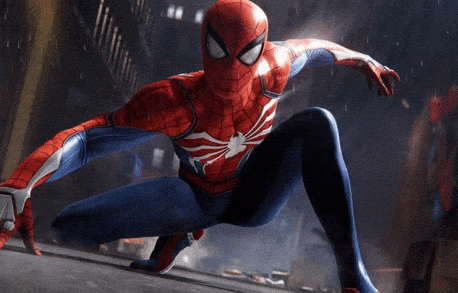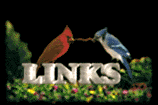SHANGRALA'S


BIZARRE
NATURE 4!

Mother Nature has many faces, some beautiful, some ugly, and some simply strange.
Above is a Spider-Man Lizard.
This is a collection of some of nature's truly bizarre aspects. From plants and
mammals to insects, here are more of God's oddest things. Enjoy! :)

Image Source
Binturong
Also known as a bearcat, this Southeast Asian mammal is only distantly
related to cats and is actually a member of the civet family. Despite
their powerful build and teeth, binturongs typically eat small animals
and fruit and are rather reclusive, using their prehensile tail to
hide in treetops, but binturongs are no pushovers and can be very
aggressive if provoked.

Image Source
Megamouth Shark
These 18-foot monstrosities can be quite alarming with their large,
gaping mouths, but they're actually filter-feeders - creatures that get
nutrition from miniscule food particles present in the water. Megamouths
are an extremely rare sight, as they mainly inhabit the deep ocean.

Echidna
Everyone knows the adorably strange duck-billed platypus, but its closest
living relative is far less famous. The echidna, native to Australia and
New Guinea, is an egg-laying mammal equipped with a long, bony, toothless
snout that, for all intents and purposes, can be called a beak. But while
platypuses resemble a cross between a beaver and a duck, echidnas resemble
hedgehogs and anteaters, which is fitting, as they mostly feed on ants.

Image Source
Glass Lizard
Glass lizards are smooth, limbless reptiles that hiss and bite when cornered,
but they really aren't snakes. You can tell a glass lizard from a true
snake by certain characteristics, such as having visible ear holes and eyelids.

Pygmy Hippo
The pygmy hippo is a West African cousin of the common hippo and is
about half the size and a fraction of the weight of its larger cousin.
Well, even a fraction of a hippo is still massive, and pygmy hippos
can grow to be as heavy as 600 lbs (272 kg). While they differ from
common hippos in many ways, they also have a mean temper and can be
dangerous if annoyed.

Image Source
Numbat
Despite having a name that sounds like a slow-witted one, this striped mammal
is truly fascinating. While it may appear superficially like a ground squirrel,
numbats are actually marsupials, but what's more interesting is that they aren't
closely related to any of the other marsupials they share the Australian
continent with, having branched off around 32 million years ago or more. Its
closest relative may have been the now-extinct Tasmanian tiger, but unlike that
carnivorous beast, numbats feed exclusively on termites.

Image Source
Prehensile-Tailed Porcupine
These rodents are New World porcupines and are only distantly related to
their Old World counterparts, with which they mainly share a name and
their defensive mechanism. What makes the Latin American porcupine unique
is an adaptation that makes it's tail prehensile, allowing it to climb
deftly in the dense forests that it calls home.

Tawny Frogmouth
What's so bizarre about these owls, anyway? Well, they're not owls, for one.
Despite their tawny coats, large, yellow eyes and nocturnal lifestyle, the
Australian frogmouths are more closely related to nightjars and aren't
nearly as powerfully-built as the night raptors they resemble. Instead,
they rely on their wide beaks to beat prey and swallow them in large chunks.

Image Source
Caecilians
This creature looks like a giant earthworm; thankfully, those do not exist
outside of science fiction (and Australia). Upon a closer inspection one
can see a mouth and a pair of eyes, that's because these disgusting wormy
critters are actually amphibians - cousins to frogs and newts who have
lost their legs to evolution, much like glass lizards and snakes.
|

Source
Budapest Highflyer Baby
This is a breed of fancy pigeon developed over many years of selective
breeding. Budapest Highflyers, along with other varieties of
domesticated pigeons, are all descendants from the rock pigeon. The
breed is the most popular in its native Hungary.

Source
Tortoise Frog
The turtle frog is a fascinating specimen, with a body shaped like a turtle
missing its shell. These animals have small beady eyes and fleshy pink skin
and are often described as a 'blob' shape. The frogs bear powerful front
limbs, making them well-equipped to burrow underground and forage for
termites, their favorite food. They emerge from underground only to mate
following Southwest Australia's mating season.

Source
Visored Bat
This is a bat species from tropical South America. It is the only species
in the genus Sphaeronycteris. Although visored bats have a number of
unique characteristics, they are thought to be most closely related to
little white-shouldered bats and wrinkle-faced bats.

Source
Harpy Eagle
The Harpy Eagle (Harpia harpyja) is considered one of the most powerful
and largest raptors globally. The length of the rear talons is about 4 to
5 inches, just the same as a grizzly bear's claws. Those talons give the
Harpy enough power and grip to lift prey up to their own weight. Native
to Central and South America, it was named for the Harpies of Greek
mythology, gruesome women with the bodies of birds.

Source
Babirusa Pig
Babirusas are sometimes called 'prehistoric pigs,' and for good reason.
They have been depicted in cave drawings more than 35,000 years old.
Their stocky bodies and curved teeth give them the appearance of an
ancient animal. They are sometimes referred to as 'deer-pigs'
and live in a very limited area that includes swamps and forests in
an Indonesia island of Sulawesi.

Source
Mexican Hairy Dwarf Porcupine
The Mexican tree porcupine, sometimes called the hairy dwarf porcupine
is endemic to Mesoamerica, found from Panama to central Mexico. It
inhabits mixed-mountain forest and coniferous forests up to 3200m high.
It has a prehensile and naked tail, which is an adaptation to have a
better grip of branches and ultimately better mobility in trees. These
porcupines move slowly and forage in the forest canopy. They mainly eat
seeds, fruits, leaves, flowers, and buds.
Their main weapon of defense against predation is their yellow sharp
quills which get stuck in another animal's skin and are difficult to
remove because they have barbs that serve as hooks. Porcupines will grow
new quills to replace the ones they lose.

Source
Dugong Marsa Alam
The dugong (sometimes spelled dugon) is a large marine mammal,
sometimes called a 'sea cow' because of its diet of sea grass.
It lives in parts of the Red Sea, the Persian Gulf and the Indian
and Pacific Oceans. It is similar to the Manatee, the main
difference being that the latter can also be found in the estuaries
of fresh water rivers. The oldest known Dugong lived 73 years.

Source
Calliostoma annulatum Snail
This snail is also known as the purple-ring topsnail, blue-ring topsnail
or jeweled topsnail. It's a medium-sized sea snail with gills and an
operculum. This snail lives off of the Pacific coast of North America
feeding seasonally on kelp, sessile fauna like bryozoans, and detritus.
The head and foot of it has a yellow-orange color with brown spots. The
shell is thin and gold with purple stripes.

Source
Mata Mata
The mata mata, mata-mata, or matamata (Chelus fimbriata) is a South
American species of freshwater turtle found in the Amazon basin and
river system of the eastern Guianas. It first became known to western
scientists when it was described by French naturalist Pierre Barrere
in 1741 as a "large land turtle with spiky and ridged scales".

Source
Long-eared Jerboa
The tiny, furtive rodent-native to the deserts of northwest China and
southern Mongolia - has a mouse-like body, rabbity ears, a snout like
a pig's, and back legs that look like a miniature model of a kangaroo.
But despite resembling a hodgepodge of other species, the long-eared
jerboa stands - and hops - in a class of its own. It is distinct enough
that authorities consider it to be the only member of both its genus,
Euchoreutes, and subfamily, Euchoreutinae.

Source, All Images Source
Spider-Man Lizard
This lizard's amazing red and blue markings are strikingly similar to the
suit worn by the crime-fighting, web-weaving daredevil. And - as the reptile
was captured crawling around on his rock - he appeared to strike an identical
pose to Spidey's favored crouching pose. The lizard is a Mwanza Flat Headed
Agama, which are native to Africa and usually live in groups with one
dominant male - usually the most colorful.
|


Share And Amaze All Your Friends :)


ALSO SEE: Bizarre Nature!

^BACK To TOP^

For those of you who Want More FUN - Visit The Shangy Fun List! Variety is the
spice of life! The Shangy Fun List is an ezine packed full of Poems, Inspirational and
Heart Warming Stories. Jokes from G to slightly R, and Anything else that just
might make you SMILE! Join In The Free FUN!! ... :)
Yes! Click Here To GO TO THE ARCHIVES!-


Like This Page?
If you are looking for more, here are some good places to start:

Finger Monkeys!-
Rare Exotic Cats!-
Real Angry Birds!-
Invisible Animals!-
Endangered Wolf!-
Beautiful Starfish!-
Ocean Exploration!-
Great White Shark!-
Dangerous Critters!-
Rarely Seen Critters!-
Albino Hummingbird!-
Great Eared Nightjar!-
Endangered Primates!-
Beautiful Rare Flowers!-
Beautiful Exotic Birds 2!-
Cute Australian Wildlife!-
Underwater Life Of Eilat!-
Amazing Albino Animals!-
Rainbow Eucalyptus Tree!-
Hand-Sized Baby Animals!-
Growing Fruits And Veggies!-
Scientists Unveil New Species!-
A-Z Animated Images!-


 -To SHANGRALA-
-To SHANGRALA-
Special THANKS Goes To KAREN FRANKLIN For Sharing This With Us.

Copyright © 1996 Netscape Communications Corporation. Mozilla is
a trademark of Netscape Communications Corporation.
Note: This is an Unofficial God, Jesus Christ, Family, & Cartoon Fan Site.
© All graphics representing Disney characters are copyrighted by Disney.
Likewise all other graphics & music Copyright © by their own Individual Artists.
I do not own any graphics on this site. If you do, please notify me
and I'll give
you proper credit, a link, or remove it immediately according to your wishes.
~*~ Copyright © 1997-2024 Elrhea M. Bigham ~*~
![]()






















![]()


![]()


![]()
![]()



 -To SHANGRALA-
-To SHANGRALA-
![]()